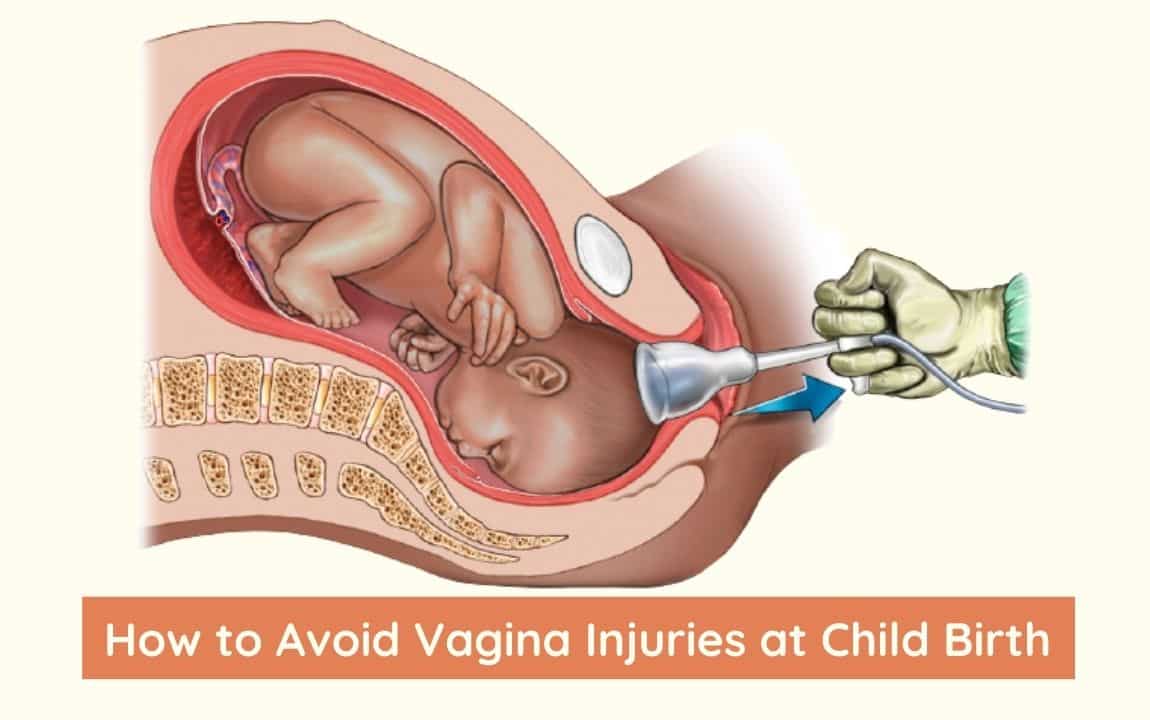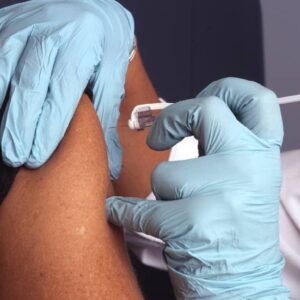How to Avoid Vaginal Injuries at Child Birth

Around 90% of women experience vaginal injuries (tearing) that occur during labor. Also, minor tears are so widespread and recover quickly that it seems to be a natural part of the birth process. Yet, during birth, most women fear tearing and want to stop it at all costs. Although certain vaginal tearing can be challenging to prevent, the risk of severe vaginal trauma can be lowered.
Factors that Causes Vaginal Injuries (vaginal tear) at Birth
The baby\’s head descends into the vagina during the second stage of labor and passes down onto the perineum. The perineal skin (the region between your anus and vagina) must be thin and spread over the head of your baby. The labia and vaginal opening begin to bulge as the baby\’s head starts to crown and extend around the head. A tear will happen if the skin and perineum have not stretched enough. Factors that increase the likelihood of vaginal injuries are:
- Big baby
- First birth
- Ethnicity
- Baby posterior positioning
- Increased weight gains in pregnancy
- First vaginal birth
Categories of Vaginal Injuries (Vaginal Tear)
Perineum tears or lacerations are categorized into four groups.
- First and second-degree tears are the most common. When the skin is torn, a first-degree laceration occurs, but it is considered minor and does not require any or just a few stitches. Skin and muscle beneath are involved in a second-degree tear and typically require some stitches.
- A break in the vaginal skin, perineal skin, and muscle that spreads to the anal sphincter (muscle around your anus) are third-degree lacerations. Except that it reaches into the anal sphincter and the tissue surrounding it, a fourth-degree tear is the same as a third-degree one. Both may affect the role of the pelvic floor and anal muscles.
It is impossible to predict which women will have a tear, but if it happens, there are things you can do to minimize the chance of a tear or the extent of an incision. If you don\’t want to take the chances of an injury, take advantage now and enroll in our short but very effective program on Avoiding Vaginal Injuries at Childbirth.
How to avoid tearing during birth
Here are some suggestions to reduce the chances of vaginal tearing during birth:
- Prepare your body
It sounds easy, but it is a must to ensure that your body is prepared for labor. Not only is work a peak performance of the body (think running endurance), parts of the body will do things they have never done before.
We certainly need to include some form of exercise in our daily routine during pregnancy, given the amount of time modern women spend sitting and not moving. Exercise increases circulation, which improves the elasticity of the skin in turn. Improving the flow of blood by orgasm to the perineum and vagina may also enhance the health of tissues.
Your skin and muscle health is improved by good nutrition and hydration. Many good fats are included, especially omega-3s (from fish, chia seeds, walnuts, and pumpkin seeds) and grass-fed or free-range lean protein.
Nutrients such as vitamin E, vitamin C, and zinc can be found in a wide variety of vegetables that complete a balanced diet. These will have the capacity of your body to stretch during and heal after labor.
- Pelvic floor exercises
Popular advice for pregnant women is to do exercises on the pelvic floor (known as Kegels) to strengthen the pelvic floor muscles. The principle is that the pelvic floor muscles will snap back into place after birth, and you are less likely to experience incontinence (wetting yourself).
You want the pelvis and vagina to open during the second stage of labor and the muscles to relax, optimizing the baby\’s space to descend. Spending all this time tightening the muscles in that region seems counterproductive when we want the opposite to happen at the critical moment. What\’s the best thing to do, then?
Using squats and pelvic floor exercises together, it is possible to expand and strengthen the alignment of the pelvic floor muscles with the other muscles in the body. It is also essential to learn to relax the pelvic muscles, and performing pelvic floor exercises will help you recognize those muscles and then relax them.
- Labour in water
The perfect picture of relaxation is immersing yourself in a big hot bath. Warm water has a multitude of advantages at work. There were no variations in tearing between birthing in water than land in a Study in 2009. Still, many midwives and women swear by warm water softening perineal tissues and relieving the crowning\’s discomfort phase.
Interesting Read: 5 Simple & Fun Ways To Document Your Pregnancy
- Birth position matters
When pushing, the place you are in has a significant effect on whether you are more likely to tear. Lying back, lithotomy position or semi-reclining positions place pressure on the tailbone and perineum, decrease the pelvic floor\’s size, and increase the risk of tearing.
The best place for your baby to be born is the one you naturally want for yourself and feel most secure in. The role that helps them cope with contractions at each stage will be identified by women who are free to move about during work. Some women prefer to float in water free of gravity; others like to keep their feet fixed firmly on the ground. Birthing positions that reduce perineum stress include:
- On all fours, on hands and knees.
- Leaning forward in an aided standing, crouching, or sitting position
- Lying on your side.
Although squatting and kneeling are helpful upright positions, the perineum is extended sideways if the woman\’s knees are very wide apart and can increase the risk of tearing.
- Perineal massage
Perineal massage will help a woman become acquainted with her own body and trust her ability to stretch and give birth to the child. If you are not familiar with the perineal massage concept, note that it is not a must. Although it decreases the risk of perineal trauma, the reduced risk can appear to be due to a reduced chance of getting an episiotomy. Researchers are unsure why this is, but one hypothesis is that women are more motivated to prefer perineal massage to prevent an unwanted episiotomy. The risk of requiring stitches rises with episiotomies, so less chance of episiotomy indicates less risk of perineal trauma.
Conclusion
Vaginal tears (lacerations or perineum tears) are dreaded complications that often throw women off the idea of going through the birth process. With the right antenatal care, proper exercise regimen, and good massages, these occurrences can be avoided. The best type of birth experience is the one you are prepared for; speak with a birth specialist today.
Severe cuts or tears during birth can lead to complications, such as substantial blood loss and infections. In case you have any questions about AVOIDING INJURIES AT CHILDBIRTH, do feel free to ask, and we’d contact the creator of the Course on your behalf.







